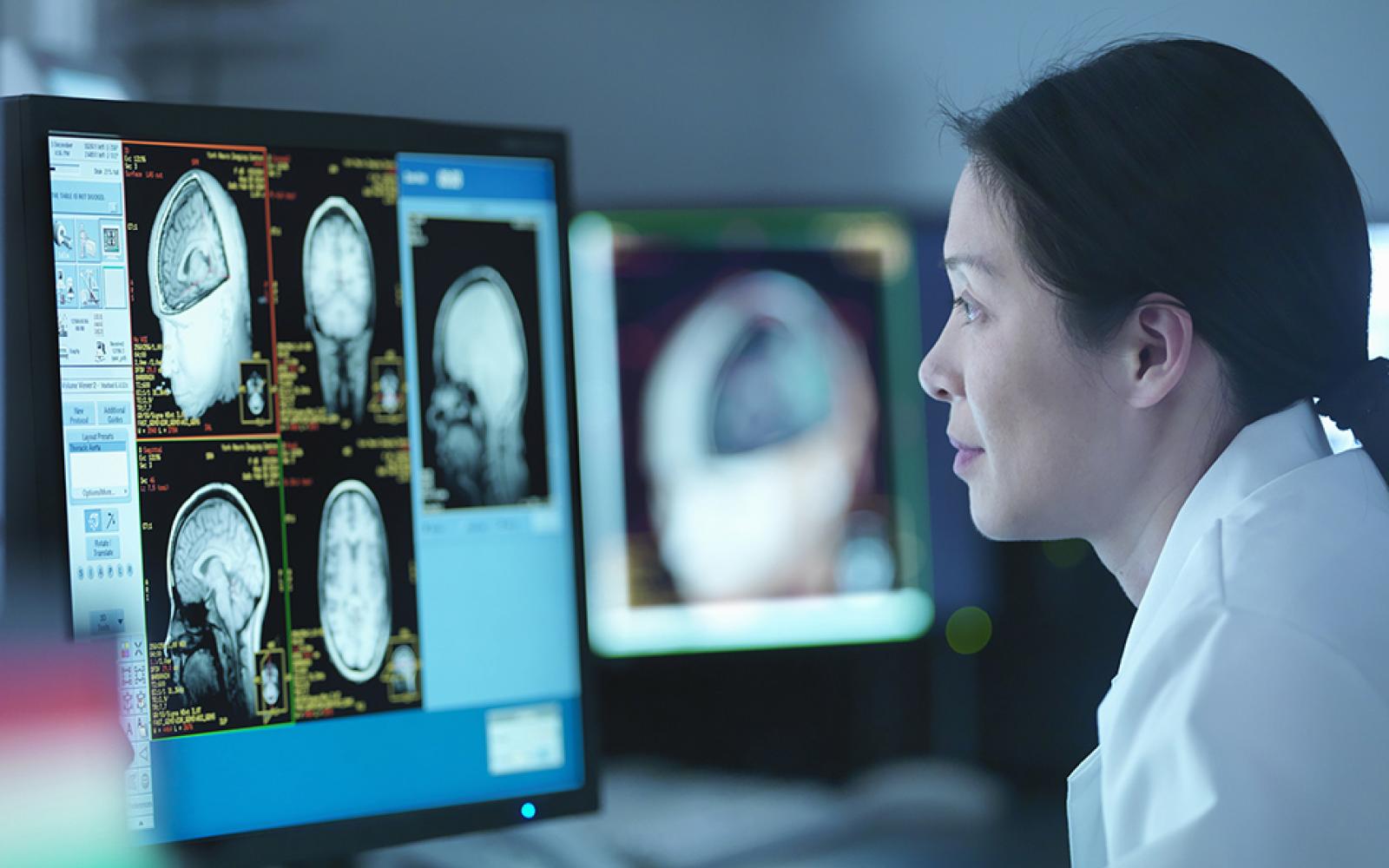
Convection Enhanced Delivery
Using standard chemotherapy on brain tumors is challenging, considering that many of these drugs (administered as a pill, or injected intravenously) do not enter the brain easily.
Increasing dosages would not work either, since these medications would reach toxic concentrations in the body before reaching effective concentrations in the brain.
To address this problem, researchers at UCSF and elsewhere have been developing a procedure called convection-enhanced delivery (CED). CED is an experimental technique for directly infusing drugs into a brain tumor. This increases drug efficacy while reducing side effects to healthy brain tissue and the rest of the body.
With CED, a small hole is made in the patient’s skull to insert a cannula (a thin tube) that extends to the site of the tumor. Depending on the location and size of the tumor, several cannulas may be surgically placed to reach the tumor from different angles. A liquid form of the drug is then actively pumped through the cannula directly into the tumor tissue. Once enough drug has been infused, the cannula is removed and the incision is closed.
Many recent innovations to this technique have been developed at UCSF, by Krystof Bankiewicz MD, PhD. Most notably, the Bankiewicz lab has developed a technique to deliver drug-loaded nanoparticles or the drug alone with an MRI contrast reagent, so that the drug is visible by MRI. This allows the surgical team to monitor the drug infusion during the operation, so they can make sure enough drug is infused throughout the tumor.
This content was reviewed by UCSF Professor of Neurological Surgery, Krystof Bankiewicz MD, PhD.
